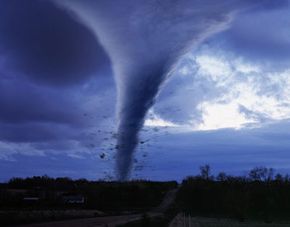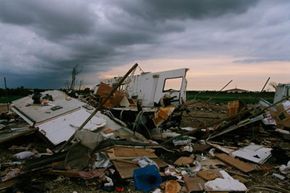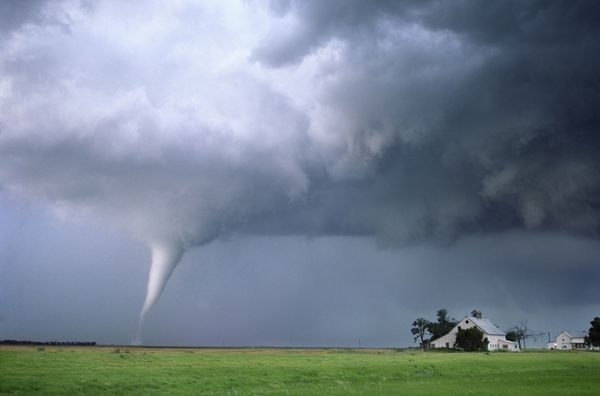Dorothy Gale and Toto might be able to tell you. Same with Bill Paxton and Helen Hunt. But aside from in "The Wizard of Oz" and "Twister," has anyone ever been in the eye of a tornado and lived to tell about it? It seems that a couple of people have -- a man in 1928 and another in 1943. We'll get to them next, but first, let's get into these tornadoes ourselves and see what all the fuss is about.
We all know what tornadoes look like, but what are they? The American Meteorological Society's official definition is "a violent rotating column of air, in contact with the ground, either pendant from a cumuliform cloud or underneath a cumuliform cloud, and often (but not always) visible as a funnel cloud" [source: American Meteorological Society].
Advertisement
A tornado forms as a thunderstorm approaches. In the lower atmosphere, increased wind speeds create a horizontal but invisible spinning tube. Once the storm rumbles through, rising air tilts this tube from its horizontal position to the more recognizable vertical funnel shape. From there, tornadoes can have wind speeds up to 300 mph and cause a great deal of destruction where they touch the Earth. They uproot trees, flatten houses and send cars flying through the air like Frisbees. The sound is often described as a freight train barreling through your home. You can learn more about tornadoes and how they're rated in How Tornadoes Work.
So if a tornado can fling a car and turn a house into toothpicks, how in the world can anyone survive standing in the eye of the beast and what's it like in there? We'll get two firsthand accounts next.
Advertisement


